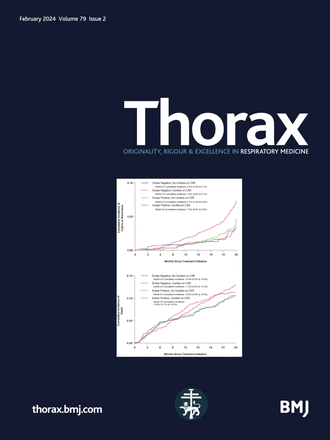Six early CPAP-usage behavioural patterns determine peak CPAP adherence and permit tailored intervention, in patients with obstructive sleep apnoea
IF 9
1区 医学
Q1 RESPIRATORY SYSTEM
引用次数: 0
Abstract
Background High rates of non-adherence to continuous positive airway pressure (CPAP) in obstructive sleep apnoea hamper good clinical outcomes. Current recommendations assumes two behaviours (adherence and non-adherence) and days 7–90 follow-up post-CPAP initiation mitigates against non-adherence. Objectives To investigate associations between early CPAP-usage behaviours and (1) CPAP adherence at month 3 of treatment and (2) sleep centres’ treatment pathways (the procedures patients undergo that may affect barriers or facilitators of CPAP adherence). Methods We conducted growth mixture modelling (GMM) on retrospective data from 1000 patients at 5 UK sleep centres. Night 1 to month 3 telemonitored CPAP-usage data were downloaded from 200 patients per centre who started CPAP in 2019 (100) or 2020 (100). Adherence was defined using accepted criteria (mean CPAP-usage ≥4 hours/night for ≥70% of nights). Results GMM identified six distinct CPAP-usage behaviour patterns over month 1. In four (54% of patients), CPAP-usage increased or decreased, in two (remaining 46%), CPAP-usage/non-usage was consistent. 62% of the cohort were non-adherent by month 3, despite pathways following current recommendations. 98% of patients who were non-adherent by month 3 were already non-adherent by month 1. Regression analysis with a separate dataset demonstrated that early CPAP-usage behaviour explained 86% of the variance in CPAP non-adherence at month 3. Conclusions These data, supported by previous work, indicate that recommended day 30–90 follow-up is too late to prevent CPAP non-adherence. Determining CPAP-usage behavioural pattern in week 2 identifies risk of CPAP non-adherence at month 3 and permits the possibility of tailored interventions. Data are available on reasonable request.在阻塞性睡眠呼吸暂停患者中,六种早期CPAP使用行为模式决定了CPAP依从性的峰值,并允许进行量身定制的干预
背景:阻塞性睡眠呼吸暂停患者不坚持持续气道正压通气(CPAP)的比例很高,阻碍了良好的临床结果。目前的建议假设两种行为(依从性和不依从性),并且在cpap启动后7-90天的随访减轻了不依从性。目的研究早期CPAP使用行为与(1)治疗第3个月时CPAP依从性和(2)睡眠中心的治疗途径(患者经历的可能影响CPAP依从性障碍或促进因素的程序)之间的关系。方法:我们对来自英国5个睡眠中心的1000名患者的回顾性数据进行生长混合模型(GMM)。从每个中心在2019年(100)或2020年(100)开始CPAP的200名患者下载了第1晚至第3个月的远程监控CPAP使用数据。依从性的定义采用公认的标准(平均cpap使用率≥4小时/夜,≥70%的夜)。结果GMM在第1个月确定了6种不同的cpap使用行为模式。在4例(54%的患者)中,cpap的使用增加或减少,在2例(剩下的46%)中,cpap的使用/不使用是一致的。62%的队列患者在第3个月时没有依从,尽管按照目前的建议进行治疗。98%的患者在第3个月时没有依从性,在第1个月时已经没有依从性。独立数据集的回归分析表明,早期CPAP使用行为解释了第3个月时CPAP不依从性差异的86%。结论:这些数据得到了既往研究的支持,表明推荐的第30-90天随访为时已晚,无法预防CPAP不依从性。确定第2周的CPAP使用行为模式可识别第3个月时CPAP不依从性的风险,并允许定制干预的可能性。如有合理要求,可提供资料。
本文章由计算机程序翻译,如有差异,请以英文原文为准。
求助全文
约1分钟内获得全文
求助全文
来源期刊

Thorax
医学-呼吸系统
CiteScore
16.10
自引率
2.00%
发文量
197
审稿时长
1 months
期刊介绍:
Thorax stands as one of the premier respiratory medicine journals globally, featuring clinical and experimental research articles spanning respiratory medicine, pediatrics, immunology, pharmacology, pathology, and surgery. The journal's mission is to publish noteworthy advancements in scientific understanding that are poised to influence clinical practice significantly. This encompasses articles delving into basic and translational mechanisms applicable to clinical material, covering areas such as cell and molecular biology, genetics, epidemiology, and immunology.
 求助内容:
求助内容: 应助结果提醒方式:
应助结果提醒方式:


